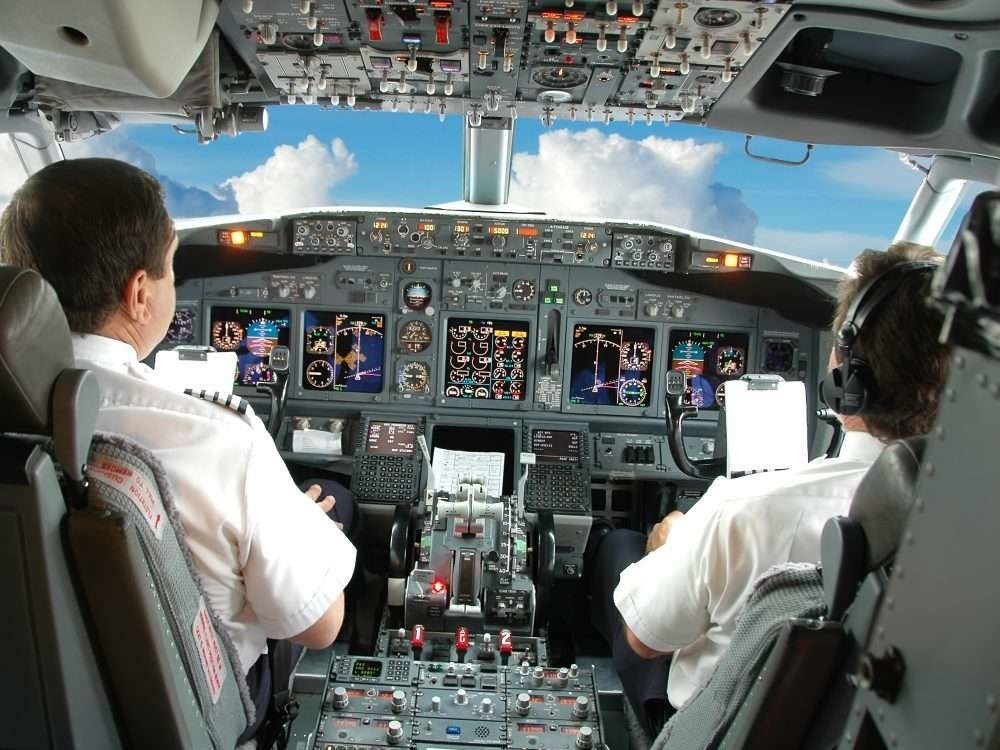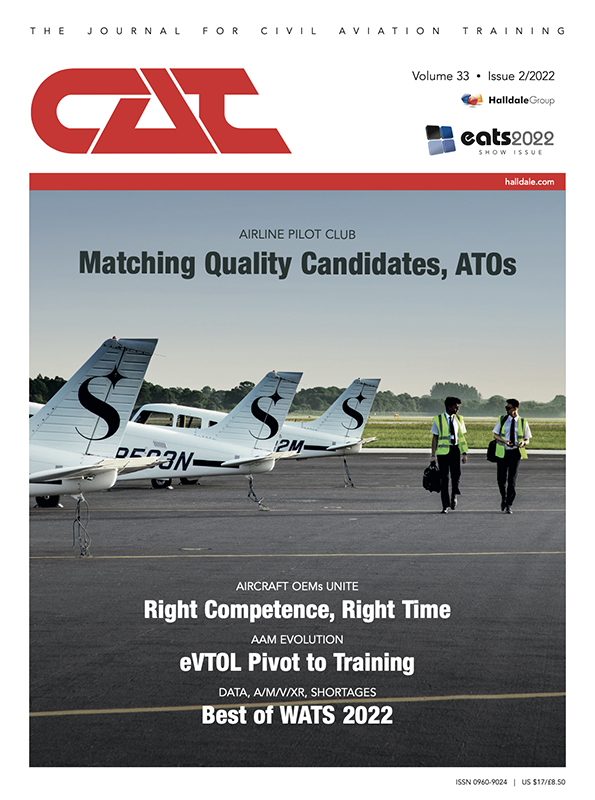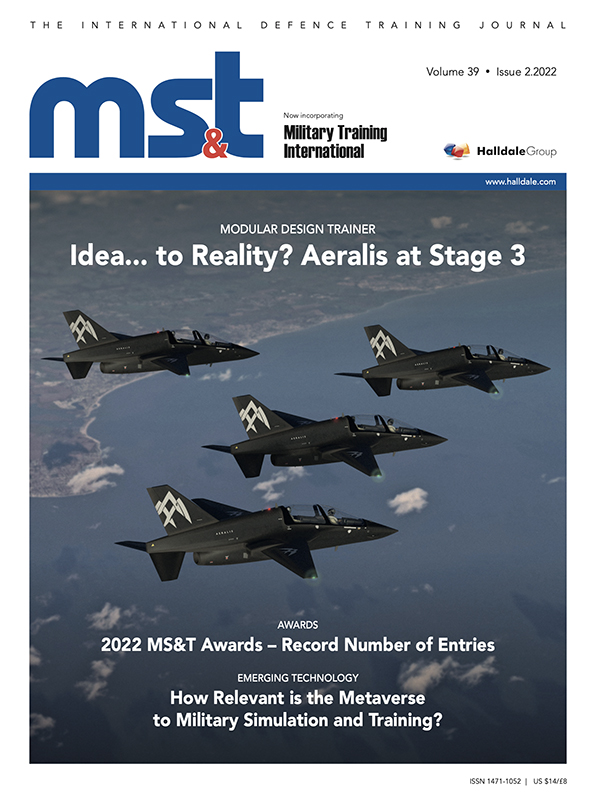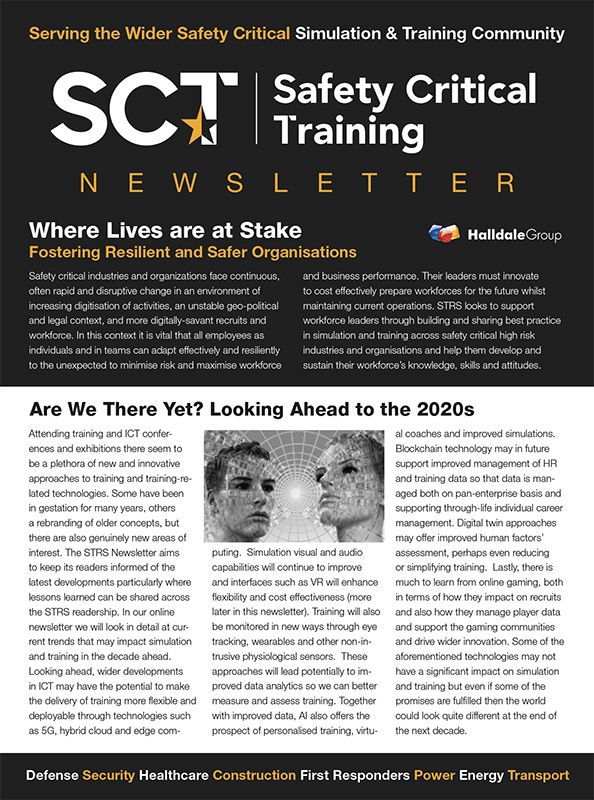Training in resilience development, an element of CRM, has been required by EASA air operations regulations since 2016. Mario Pierobon talked with training leaders about approaches to managing risk and challenging flight events.
Resilience development in crew resource management (CRM) training should cover mental flexibility and performance adaptation, according to EASA air operations regulations (ORO.FC.115).
Flight crews are required to be trained to understand that mental flexibility is necessary to recognise critical changes, to reflect on their judgement and adjust it to the unique situation, to avoid fixed prejudices and over-reliance on standard solutions, and to remain open to changing situations and perceptions.
In regard to performance adaptation, flight crews should be trained to mitigate frozen behaviours, overreactions and inappropriate hesitation, and to adjust actions to current conditions.
AF447, 10 Years On
One of the drivers for resilience development in pilot training was the Bureau d’Enquetes et d’Analyses pour la securite de l’aviation civile (BEA) report into the AF447 accident in 2009.
“In that event, the crew experienced a disruptive event, ie loss of indicated airspeed. They had been trained for this event but for some reason they were not able to apply that training when it mattered. We may never know for sure the reasons why, but the event highlighted that unexpected events can adversely affect the abilities of otherwise proficient pilots,” said Andrew McKechnie, Director of McKechnie Aviation.

According to CRM and human factors trainer Thomas Fakoussa, resilience is a character quality that is unique to every person and shows fast recovery from stress or even high resistance to stress. “In a way, it is very much like what James Bond and John Wayne show in their films. Resilience cannot be developed during a CRM course but can be described and techniques can be presented; but it is up to the individual to personally train and develop it,” he said.
“Psychologist Ivan Robertson and Cary Cooper – who have worked on resilience – affirm that there are four main defining elements: confidence, social support, adaptability and purposefulness,” said Gitte Furdal Damm of consultancy About Human Factors.
“Confidence is about being able to reflect on your own mistakes and learn from them. Having a profound belief that things will go well, despite disruptive change.
“Social support is that from colleagues, but also from the organisation.
“Adaptability concerns being able to adjust to the situation, without being emotionally overwhelmed.
“Purposefulness is about feeling purpose in life in general and in the job.
“Resilience development in aviation is about having flight crews avoid being overwhelmed by the situation emotionally, to be able to bounce out and to look beyond standard solutions.”

Indeed, there are some specific items to emphasise in CRM training so that flight crews can develop or reinforce resilience. “In order to train people to be more resilient, we need to improve confidence and competence. A simplified equation gives ‘resilience = competence x confidence’” explained Pierre Wannaz, a Swiss captain and Senior Advisor at CEFA Aviation. “CRM training can reinforce resilience. This can be achieved by applying real case studies or complex scenarios during which the trainees can be confronted to their own reactions in real time in stressful, unexpected and highly complex situations – especially the ones demanding an efficient work organisation, good communication and work delegation skills. One of the best training fields for pilots is a complex scenario, fully unknown, played in real time in the simulator.”
“To develop and reinforce resilience, we need to provide pilots with strategies to cope with unexpected events and the opportunity to practice those strategies. A small part of this might be done in the classroom but we must stop thinking of CRM training as a discrete discipline. Resilience development – and the other ‘CRM elements’ – need to be integrated into practical training as well,” said McKechnie. “The classroom training might draw on the work of neuroscientists and psychologists, but most pilots do not react well to ‘psycho-babble’ so we need to frame this in terms of practical tools. Pilots need to learn to recognise the ‘startle effect’ and the ‘fight or flight’ response that can inhibit effective diagnosis and management of a problem. Once these effects have been recognised, they need to be managed.
Effective strategies include use of memorised checklists (if appropriate), mnemonics (DODAR, FORDEC, NITS, etc) and even simple actions like asking for help, taking deep breaths and ‘sitting on your hands’ (ie, do nothing and assess the situation). Practical training should provide opportunities to put these strategies into practice.”
Resilience and ‘Risk Anticipation’
According to McKechnie ‘risk anticipation’ is one important strategy to develop resilience. “If one has anticipated an event, then it is not going to be a surprise when it happens, so one will not have a ‘startle’ reaction. Being proactive goes hand-in-hand with anticipating risks but neither of these is sufficient to ensure resilience. However much one anticipates risks there is always the possibility that something happens that one did not anticipate. The ‘resilient’ crew will continue to be effective even after those unexpected events, which are sometimes referred to as ‘black swan’ events,” he commented.
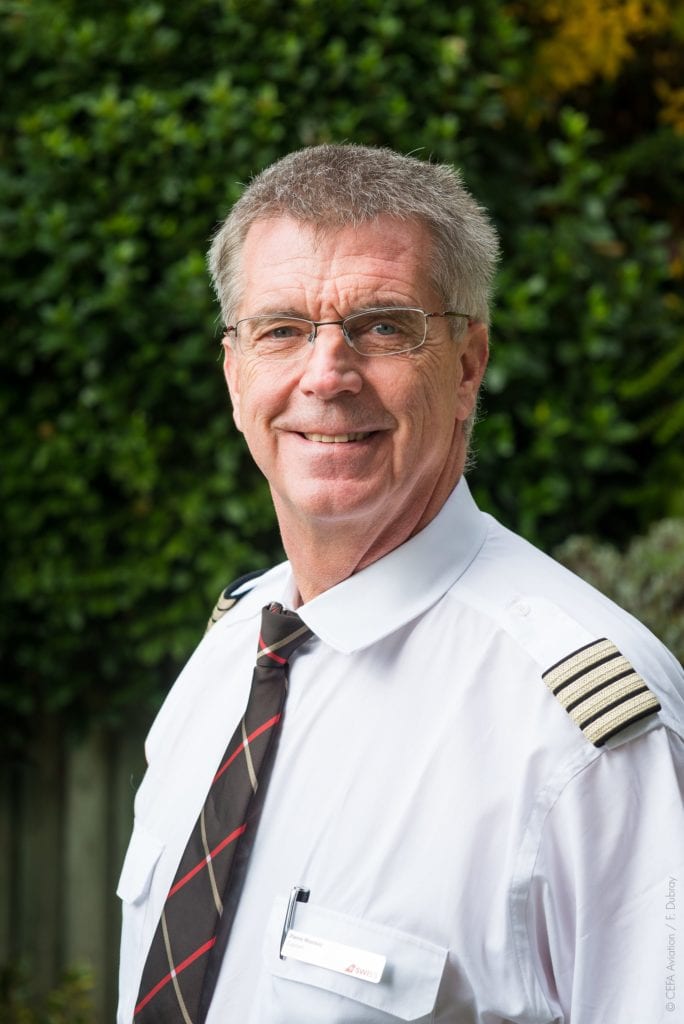
Resilience should not be confused with ‘risk anticipation’. “Pilots practice this risk anticipation already during standard simulator sessions. We know that some failures are prone to occur, so we train pilots to react correctly in such situations. The main idea of resilience is to go beyond this form of ‘monkey training’,” said Wannaz. “We need pilots not only to be able to react correctly to a single identified problem, but we need them to be able to react positively to ‘black swan’ issues. This is by having their attitude and problem-solving skills developed to a level where they will be able to work out a solution without having only to repeat something they have already been trained for.”
“Risk anticipation can cause anxiety or insecurity and is therefore not to be compared to resilience. Being proactive might reduce the acute stress level as it is an expected situation and one might already have a coping technique,” said Fakoussa. “However, neither risk anticipation nor being proactive changes one’s personal resilience, ie one’s bodily and mental reaction to an acute stressful situation. Both can nevertheless lead to a faster reset, ie going back to normal body and mind functions. On the other end, resilience means that no reset is necessary, as the body and mind remain in ‘normal conditions’. If during a CRM course there is enough time and room to actively train personal resilience development, it would show in unexpected situation reaction, most probably in the simulator first.”
Reinforcing Positive Performance
Wannaz believes that one of the hallmark features of aviation systems is that they are good at dealing with anticipated threats, but not as effective at dealing with unanticipated ones. “As the complexity of these systems grows, both the sources and severity of possible disruptions increase, even when the size required for potential ‘triggering events’ decreases. It can take only a tiny event, at the wrong place or at the wrong time, to spark a calamity.”
In such context, flight crew are showing resilience all the time. Furdal Damm likes to emphasise Professor Erik Hollnagel’s concept of ‘work as imagined vs work as done’.
“Work as imagined describes how we imagine the work is conducted, through procedures, checklists, training and so forth. However, the reality very often shows another picture, ie the ‘work as done’ by the flight crews. This is where flight crews navigate and adapt through all the messy details that are not described in procedures, checklists, etc in order to get the job done. This is where they show resilience,” she said.
“The Hudson River accident is a remarkable example. The crew had to bounce out of standard solutions in order to survive. No checklist or procedure could have helped them in this situation. This happens all the time in daily operations; we just do not hear about it, as only rarely things result in an incident or accident. The things that flight crews do to tie together the knots in a complex working environment. So, to keep a positive focus on this issue, the questions to take in consideration are ‘what went right in this situation?’ – instead of asking ‘what went wrong?’ – and ‘how can we learn from this situation in the future?’.”
Traditionally there has not been much focus on positive performance in flight crew training. The typical debrief following a check event is normally a list of everything the pilots did wrong.
“As an example, I remember completing a line check some years ago. I was graded 3 (average). The Check Captain said, ‘Nothing really happened’ and did not have anything to talk about during debriefing. I was disappointed because I believed that his perception that ‘nothing happened’ was because, as a crew, we anticipated risks and managed them proactively. ‘Nothing really happens’ is what one pilot should strive for on every flight. During training and checking events we need to put more emphasis on the things that go well, ask the question ‘why did it go well?’ and reinforce the related behaviours,” said Fakoussa. He believes that an important aspect of the positive performance of a flight crew to emphasise in CRM training for reinforcement is ‘staying calm’. “But as we all know, the advice to stay calm and to follow procedures does not work for the majority of pilots in a real life-threatening situation,” he noted.
There must be a focus on positive performance as part of resilience development. “To train resilience, one main part is to raise the confidence of trainees, where positive outcome is definitely part of it. By having more confident people (this is for sure limited on top by over-confident people, but that is another problem usually not encountered in basic training), the startle effect can be reduced,” said Wannaz. “Another way is to give trainees structural and systematic problem-solving tools in order to handle unexpected occurrences. Most airlines already do this but implementing such decision-making checklists during effective training and not only in classroom teaching will help to develop well-structured working behaviours and actions, less based on immediate spontaneous decisions.”
Studying positive outcomes of situations experienced by other crews is also a good means to raise the competences of the trainees. “They can understand better. When they are aware of potential difficulties of certain situations, they are better prepared to face similar occurrences. This is why a visual tool allowing the understanding and the dynamic of a real-case situation is the best support for conveying such information,” said Wannaz.
In the CRM training situation it is necessary to find suitable stories in the organisation and to discuss how these stories can be examples of resilience. “This can be done by group facilitation, where you discuss what the situation was, and how the crew responded to or coped in this situation. Moreover, it is important to inspire participants to come up with their own stories from the everyday life, underlining that flight crews are showing resilience every day,” said Furdal Damm.
Evidence-Based Training (EBT) is also helpful with regard to reinforcing positive performance. “When we design training events we need to build in opportunities for learning from positive performance. This is one of the important principles of EBT where we use scenario-based training in a simulator to develop flight crew competencies and we use ‘observable behaviours’ to assess and debrief the crew’s performance,” said McKechnie. “The ‘observable behaviours’ for EBT are all positive markers for competence so the EBT debrief will emphasise the behaviours that were effective. For example, if we see that a Captain gives direction, admits his/her mistakes, intervenes when important for safety and receives feedback constructively then we conclude that she/he is competent in leadership and teamwork.”
“Understanding our own strengths in the different competency fields defined by EBT enables every pilot to be able to focus on his own operations, using mainly the areas of expertise that he masters the best. By realising which competencies are the weakest in their own performances, pilots can develop strategies or workarounds so that these existing potential weaknesses (that everyone has) do not pose a threat or an obstacle in the overall crew performance,” said Wannaz.
Needed Skills of Trainers
On top of the theoretical knowledge, trainers need certain skills to train on resilience development. First, they need to be convincing. “Only a pilot that actually has resilience himself can talk and present the subject in a motivating and authentic way. Just presenting the topic and being non-authentic cannot convince anybody about the value of resilience development,” said Fakoussa.
Moreover, the trainer should integrate the CRM aspects in practical training such as the simulator for the pilots. “Unexpected events and failures should be programmed, such as items that cannot be known in advance. Fantasy is needed from the CRM trainer. It is essential to create situations that will have a positive outcome, but that are challenging enough and difficult to solve. Positive outcome of such scenarios will boost the trainees’ confidence,” said Wannaz.
McKechnie also believes that reinforcing positive behaviour can be best done in the ‘operational environment’ – for example, during simulator training or line flying under supervision.
“The effective instructor will carefully observe and record what trainees do and will analyse the root-causes of effective and ineffective strategies. This requires interaction with the trainees, asking them why they took particular actions and what they were thinking. The instructor will help trainees to discover for themselves (eg, facilitation). The instructor should be aware of the trainee’s emotional state as well as their behaviours. He/she will make training an enjoyable experience. In scenario-based training the instructor will make sure that the scenarios challenge the trainees but don’t break them.”
To find trainers who are good at this type of instruction it is necessary to look for people who are empathetic. “Social awareness and openness are just as important as ‘stick and rudder’ skills. To make sure that EBT instructors have those skills there is a specific EBT instructor course. The objectives of this course include making assessments based on observable behaviours, identifying trainee’s strengths and facilitating learning through the use of appropriate teaching styles. Over the next few years we’re going to see the principles of competency-based training applied to other types of training, so these skills should become universal for instructors,” said McKechnie. “Being told what to do may make some difference to how a pilot behaves but not much and not for long. In order to make a lasting difference the pilot needs to understand why particular behaviours work better, ie she/he needs to think differently. We are most likely to change the way we think after an emotional experience. Trainers should ask trainees about their first solo flight. That is because the first solo is (almost always) an emotional experience. We start out feeling anxious and perhaps overwhelmed, but we apply the skills and procedures we have learnt to get the aircraft airborne and back on the ground. Afterwards there is a feeling of satisfaction, or even elation. Student-pilot performance always improves after that first solo experience. Many pilots may also be able to tell about a negative experience in training (ie, the failed check) but these often result in a deterioration in performance, at least in the short term.”
From the technical side, the complexity of the event must be correctly adapted to the skills of the trainees, to let them face complex unexpected situations and find out a solution. “It is also very important for the trainer to create a complex set-up that can be solved by the trainees, in order to get a positive outcome and thereby build the confidence. It is quite challenging for the trainer because a negative output – if the trainee fails to solve the problem – can be destructive in terms of confidence, a key element of the resilience,” said Wannaz. “The balance between creating a sufficiently complex situation so that trainees need to apply multiple problems’ solving and various competencies, without pushing them to a negative outcome, is quite subtle and demands from the trainer a good understanding of the level and capacities of his trainees. The debriefing is a key element in understanding the performances and the trainer has to facilitate it by having the trainee also realize their strengths and positive outcomes.”
An Integrated, Practical Approach
Some topics related to resilience development fit well into classroom training, but others do not.
“The role of the training manager should be to design an integrated training programme for flight crew that uses the best training media for each training objective. This could include all kinds of online training as well as practical training in simulators and other training devices,” said McKechnie.
Resilience development is not purely a responsibility of the flight crew, but it is also influenced by the organisation. “What kind of social support is exercised by the organisation? Is there peer support, and an open learning environment where it is ‘allowed’ to address ‘work as done’?” concluded Furdal Damm.
Published in CAT issue 4/2019

